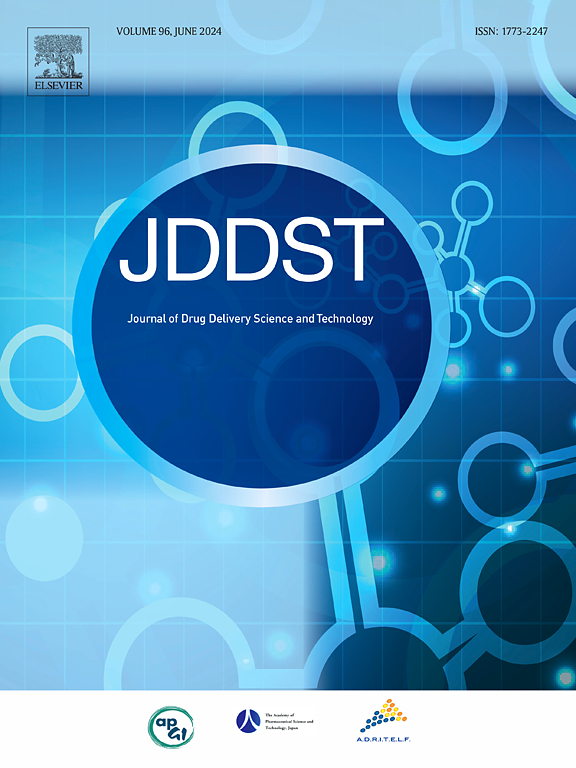Development of liposome-loaded macrophages as tumor-targeted drug delivery carriers: Impact of macrophage phenotypes on their liposome-loading capacity and tumor-homing potential
IF 4.5
3区 医学
Q1 PHARMACOLOGY & PHARMACY
Journal of Drug Delivery Science and Technology
Pub Date : 2025-03-28
DOI:10.1016/j.jddst.2025.106866
引用次数: 0
Abstract
Macrophages have not only a high phagocytic capacity, but also a tumor-homing ability, and, thus, nanoparticle-loaded macrophages are regarded as an active drug delivery carrier targeting tumors. Macrophages exhibit several phenotypes, such as proinflammatory M1 and anti-inflammatory M2; however, it remains unclear which phenotype possesses superior characteristics as a drug delivery carrier. Therefore, we herein comparatively examined the cellular uptake of doxorubicin (DOX)-encapsulated liposomes (DOX-Lip) and associated cytotoxicity in RAW264.7 murine macrophage-like cells with three different phenotypes: the naïve M0, M1, and tumor-associated macrophage (TAM)-like phenotypes, the latter of which shows similar characteristics to the M2 phenotype. The highest uptake of liposomes was by TAM-like RAW264.7 cells, whereas a significant reduction in cell viability associated with liposome uptake also occurred. M0-type and M1-type RAW264.7 cells showed high cell viability after liposome uptake. M0-type cells exhibited higher tolerance to DOX-Lip uptake than M1-type cells. An in vitro migration assay demonstrated that DOX-Lip-loaded M0-type cells preferentially migrated towards the tumor microenvironment, whereas DOX-Lip-loaded M1-type cells did not. DOX-Lip-loaded M0-type cells also efficiently accumulated in tumor tissue and exhibited significant anti-tumor efficacy in B16/BL6 tumor-bearing mice. These results provide valuable information for the development of a macrophage-based tumor-targeted active drug delivery system.

求助全文
约1分钟内获得全文
求助全文
来源期刊
CiteScore
8.00
自引率
8.00%
发文量
879
审稿时长
94 days
期刊介绍:
The Journal of Drug Delivery Science and Technology is an international journal devoted to drug delivery and pharmaceutical technology. The journal covers all innovative aspects of all pharmaceutical dosage forms and the most advanced research on controlled release, bioavailability and drug absorption, nanomedicines, gene delivery, tissue engineering, etc. Hot topics, related to manufacturing processes and quality control, are also welcomed.

 求助内容:
求助内容: 应助结果提醒方式:
应助结果提醒方式:


